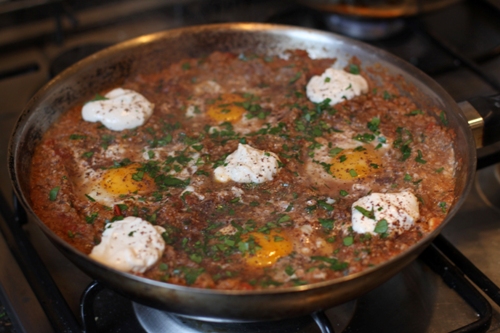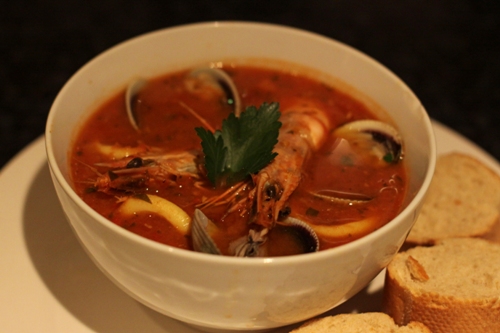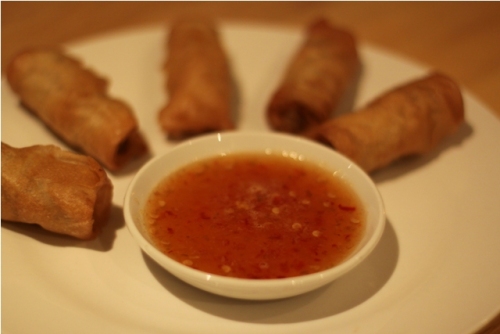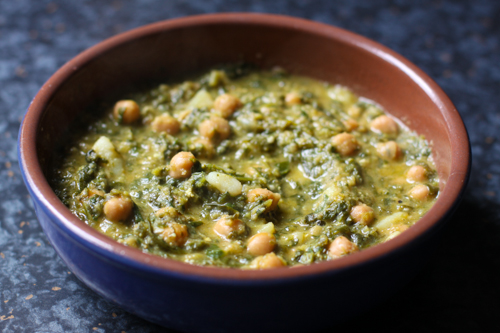Lamb shakshuka with chargrilled aubergine and garlic yoghurt
 Wednesday, July 3, 2013 at 10:44PM
Wednesday, July 3, 2013 at 10:44PM Inspired by Yotam Ottolenghi

In my last post, I shared Dr Shakshuka’s traditional Israeli shakshuka, which he demonstrates to Ottolenghi in the last episode of Ottolenghi’s Mediterranean Feasts. In this programme, Ottolenghi also makes his own version of shakshuka with beef and smoked aubergine.
“I have a feeling that what I am doing is slightly sacrilegious” says Ottolenghi.
You can see from his amused expression that Dr Shakshuka agrees.
“If you want to call it a shakshuka, then it’s a shakshuka” he says.
 Vix |
Vix |  5 Comments |
5 Comments | 


